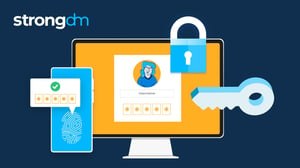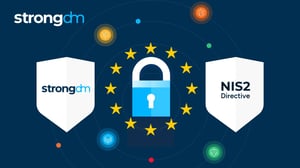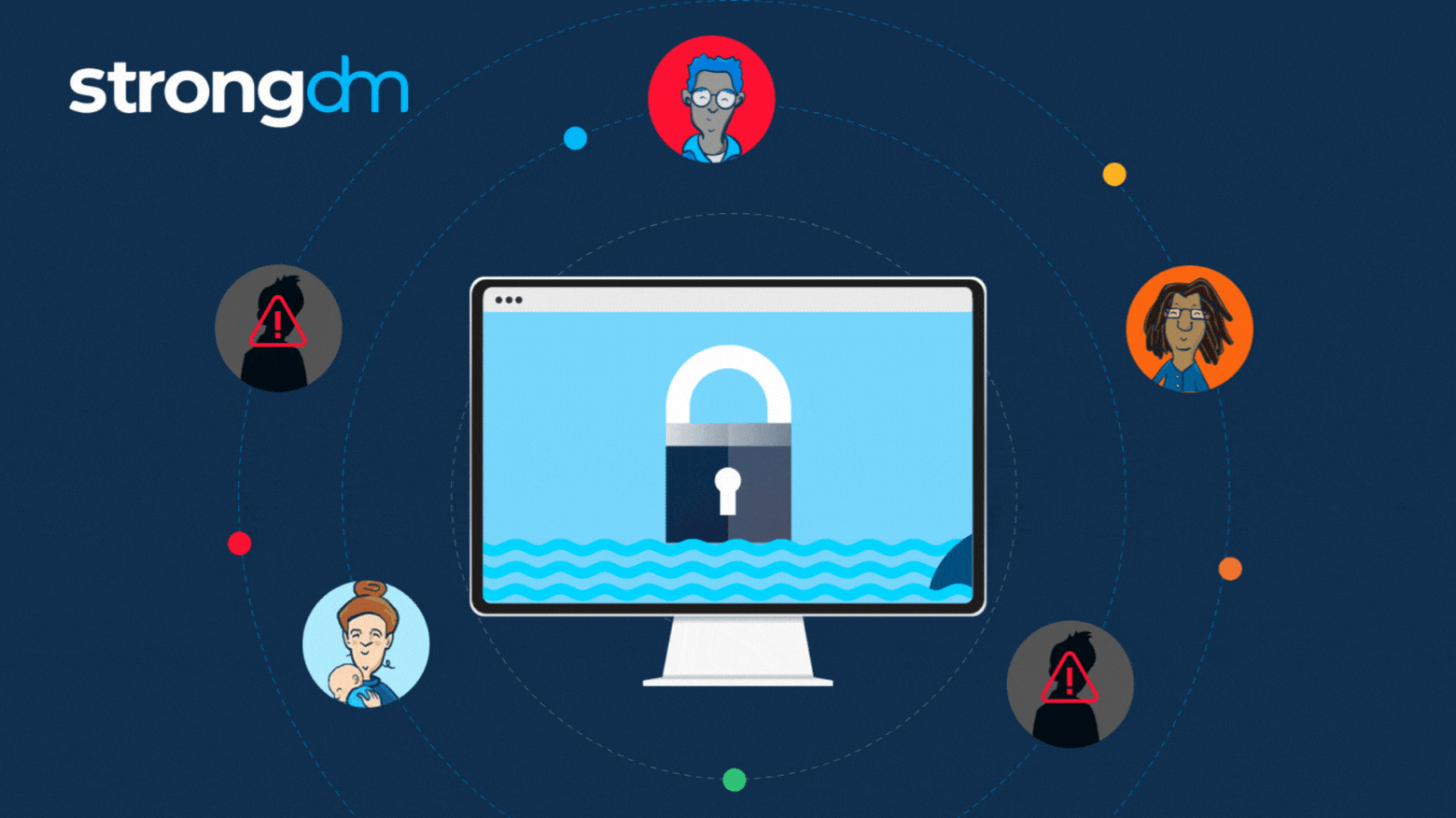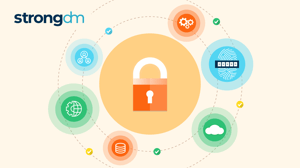
- Role-based, attribute-based, & just-in-time access to infrastructure
- Connect any person or service to any infrastructure, anywhere
- Logging like you've never seen
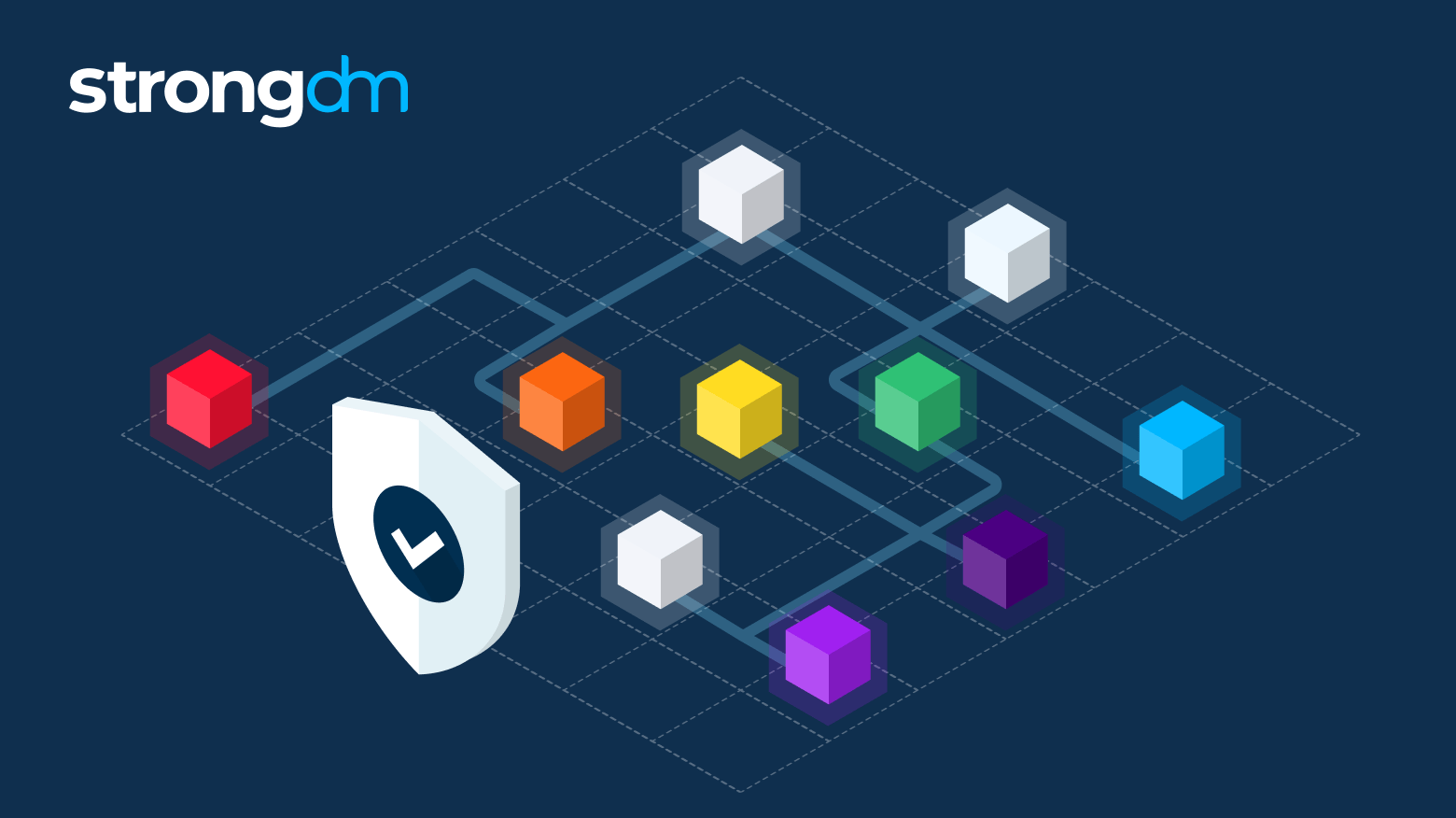
Now more than ever, organizations are continuously at risk of cyber threats. Risk is everywhere, but an organization’s tolerance for risk varies, and no two organizations are entirely alike. So, how can an organization calculate its current risk level? Start with an audit. Cybersecurity audits help organizations assess their security posture, understand specific risks, and identify ways to protect the business against potential threats.
Proactive threat management helps safeguard against financial loss, reputational damage, and operational disruptions, ensuring the business's sustainability and growth. One of the foundational steps in this journey is understanding the basics of a cybersecurity audit.
What Is a Cybersecurity Audit?
A cybersecurity audit is a comprehensive assessment of your organization's information systems, networks, and processes that identify vulnerabilities and weaknesses that cybercriminals could exploit.
The audit also evaluates the effectiveness of your security controls, policies, and procedures and determines if they align with industry best practices and compliance standards.
💡Make it easy: StrongDM’s auditing features give admins detailed documentation needed for a cybersecurity audit.
Internal vs. external cybersecurity audits
There are two main types of cybersecurity audits: internal and external. Internal cybersecurity audits can be conducted by your organization’s IT team; they have the advantage of using in-depth knowledge of internal systems and processes. Third-party auditors conduct external IT security audits, which provide an objective perspective through specialized expertise. A combination of both approaches often yields the most comprehensive assessment.
How often should you conduct a cybersecurity audit?
How often you conduct an IT security audit varies based on several factors, including the size and complexity of your organization, industry regulations, and the level of risk you are willing to tolerate.
Ideally, you should conduct a cybersecurity audit at least once a year. If your organization operates in highly regulated industries or handles sensitive customer data, you may need to audit more frequently. Major changes within your IT infrastructure, like adding new servers or transitioning to new software platforms, also necessitate an immediate audit.
If your business handles personally identifiable information (PII), consider an audit frequency of twice a year or even quarterly. If you’re subject to PCI compliance, an audit every 90 days (or once per quarter) is mandated. If you’re subject to HIPAA compliance, be prepared for audits triggered by factors such as patient complaints or security incidents.
💡Make it easy: StrongDM helps you manage regulatory compliance by providing detailed access controls and audit trails to ensure that only authorized individuals can access sensitive information.
Planning and Preparing for Your Cybersecurity Audit
Preparing for a cybersecurity audit requires a systematic approach to evaluate the business and address any potential vulnerabilities thoroughly. Use this checklist to prepare:
- Determine the scope of the audit and clearly outline which areas of your IT infrastructure will be audited, including network security, data privacy, application security, or all of these.
- Ensure that the audit addresses relevant standards for sensitive information, such as HIPAA for healthcare information or PCI for payment card information.
- Create a security audit checklist to gather the necessary documentation and tools and compile all relevant policies, procedures, and previous cyber audit reports.
- Select appropriate tools for the audit, including static analysis tools, source code analysis tools, or user action monitoring software.
- Assign a dedicated team to work with the auditors, including members from your IT department who are familiar with your systems and security measures.
- Define metrics and methods for measuring and reporting on security controls. This plan should be in place before the audit to help identify any gaps in your security posture.
💡Make it easy: StrongDM published Comply, a collection of free, open-source SOC 2 policy templates, to help you plan and prepare for your SOC 2 cybersecurity audit.
Step-by-Step Guide to Conducting a Cybersecurity Audit
Conducting a cybersecurity audit requires meticulous planning, execution, and follow-up. Here's a step-by-step guide for an effective audit:
Step 1: Determine your goals
Determining the goals for your cybersecurity audit is like setting the destination for a journey: You have to know where you want to go so you can plan the best route to get there. Start by clearly defining the objectives of your IT security audit. Are you looking to identify vulnerabilities, assess compliance with specific standards, or both? Understanding your goals will help you prioritize the areas to focus on during the audit.
💡Make it easy: StrongDM has a library of guides about auditing objectives for different standards like HIPAA and PCI.
Step 2: Define the scope
Define the scope of your audit by identifying the systems, networks, and processes that will be included, as well as when they’ll be audited. Consider critical assets, such as customer data or intellectual property, and ensure they are adequately covered.
In planning your audit scope, remember to account for the interdependencies between different components of your IT system. Recognizing how these elements interact will provide a more comprehensive understanding of potential vulnerabilities.
Step 3: Identify threats
Identify the potential threats — both external and internal — that your organization faces. Understanding the threats will help you assess the effectiveness of your security controls. Here is a cybersecurity audit checklist of threats to watch for:
- Phishing attacks: These continue to be prevalent, tricking users into divulging sensitive information through seemingly legitimate requests.
- Weak passwords: Simple or reused passwords can be easily cracked, providing a straightforward entry point for cybercriminals.
- Insider threats: Some threats may stem from malicious insiders seeking to exploit their access for personal gain.
- DDoS breaches: Distributed Denial of Service (DDoS) attacks can overwhelm systems, rendering them inoperative and vulnerable.
- Employee devices: Personal devices connecting to the network can introduce unsecured entry points.
- Malware: This broad category includes ransomware, spyware, and viruses that can infiltrate and damage systems.
- Bot attacks: Automated software applications that perform repetitive tasks, which can be used maliciously to interact with network systems in an attempt to compromise them or simulate fake user activities.
Identifying potential threats helps your organization pinpoint blindspots and ensures that the team is preemptively managing threats, not just responding to them.
💡Make it easy: StrongDM audit logs capture rich data from all critical information systems, valuable for incident response and audits.
Step 4: Evaluate risks
Evaluating risks during a cybersecurity audit requires a detailed analysis of the identified vulnerabilities and their potential impact on the business. Use this cybersecurity risk checklist to help determine the likelihood and impact of security breaches:
- Risk Analysis Process: Identify vulnerabilities, assess threat likelihood and impact, and score risks based on each of these factors to prioritize which vulnerabilities need immediate attention.
- Risk Management Strategies: Define your risk tolerance, implement security controls, and set up continuous monitoring.
- Cross-Departmental Collaboration: Create a team of representatives from various departments to document all critical information assets, including data, software, and hardware components.
This helps leaders prioritize efforts and allocate resources to align with business objectives.
Step 5: Evaluate adherence to controls, procedures, and processes for the given compliance standard
Determine the appropriate controls to mitigate identified risks, including incident response, governance frameworks, and strategic investment. If your organization needs to comply with specific industry standards or regulations, evaluate the adherence to those controls, procedures, and processes.
Step 6: Determine gaps in controls, procedures, and technologies
Identify any gaps in your controls, procedures, and technologies. This could include outdated software, weak passwords, or a lack of employee training. When you know where your gaps are, you can take action to strengthen your security posture.
💡Make it easy: StrongDM simplifies performing an annual access audit to help reduce your attack surface.
Cybersecurity Audit Example
An example of a cybersecurity audit is a SOC 2 audit to assess your organization’s internal controls governing its services and data. Based on Trust Services Principles, a SOC 2 audit helps your company demonstrate security controls used to protect customer data in the cloud. This type of IT security audit gives your company valuable insights into its internal controls, governance, and regulatory oversight and reduces costs by preventing security breaches and data loss.
Each SOC 2 audit is unique, depending on the company, but there are two primary types:
- Type 1 examines your security controls at a single, specific time, or
- Type 2 looks at your controls over a six to 12-month period
A SOC 2 audit will require your IT team’s involvement, but other stakeholders such as employees from legal, HR, security, and the executive team, may also be involved, along with an external consultant. SOC 2 audits must be completed by an external auditor from a licensed CPA firm specializing in information security. A non-CPA consultant with relevant experience may assist in audit preparation, but a CPA must issue the final report.
A typical SOC 2 can take several months to complete, and the report is valid for 12 months from the date of issuance. A 6-month SOC 2 cybersecurity audit costs up to $147,000, including the cost of personnel, tools, and training.
💡Make it easy: Prepare for your SOC 2 cybersecurity audit with StrongDM’s free, on-demand SOC 2 Course and guide, which includes security audit examples.
Best Practices for a Cybersecurity Audit:
The goal is a thorough, accurate, and efficient audit that identifies and mitigates risks with minimal disruption to the business. This checklist of cybersecurity audit best practices will help:
- Establish clear objectives: Before starting, define what you want to achieve, from compliance verification to a comprehensive threat assessment.
- Conduct a thorough risk assessment: Identify and prioritize potential risks to your IT infrastructure.
- Review security policies and procedures: Your policies should be up-to-date and aligned with industry best practices.
- Perform technical assessments: Conduct in-depth analyses of your systems for vulnerabilities.
- Review security incident logs: Analyze logs for patterns that might indicate security weaknesses.
- Document everything: Keep detailed records of your findings and the steps taken to address them.
- Ongoing monitoring: Implement continuous monitoring practices to stay ahead of new threats.
💡Make it easy: StrongDM's report library gives you easy access to all user activity for internal auditing to catch security issues before they become a problem.
How to Leverage IT Security Audit Findings
Your IT security audit findings provide valuable insights into your organization’s security strengths and weaknesses. Here are some actions you can take to leverage your findings and bolster your organization's defenses against cyber threats:
Prioritization and Action Planning
Categorize findings by using a risk matrix or scoring system. This helps you focus your efforts on high-risk areas and critical vulnerabilities first. Then, for each identified issue, develop a detailed action plan that addresses root causes and includes the recommended solution, assigned responsibilities, and a timeline for implementation. Set specific, measurable objectives for each action plan. Establish milestones to track progress and keep the implementation on schedule.
Implementation and Monitoring
Follow the action plan diligently, ensuring that each step is executed as planned. Use automated tools for real-time monitoring, regularly review security logs, conduct vulnerability assessments, and adjust controls based on the current threat landscape.
Evaluation and Continuous Improvement
Establish Key Performance Indicators (KPIs) and metrics to evaluate the impact of implemented controls and measure success. Document the implementation process, outcomes, and any deviations from the plan in detail. Report the results to stakeholders, highlighting successes and areas for further improvement.
Based on the outcomes and feedback, continuously update your cybersecurity policies, standards, and procedures. This keeps your defenses up-to-date to protect against evolving cyber threats and align with best practices and regulatory requirements.
💡Make it easy: Integrate StrongDM with your existing security information and event management (SIEM) system for cybersecurity audits, evaluation, and improvement to get detailed logs and audit trails.
What Makes StrongDM an Essential Cybersecurity Audit Tool
Controlling access to your organization's resources is crucial for maintaining a secure environment. StrongDM is a powerful tool that simplifies and strengthens your access controls, making it a must-have for your cybersecurity audit.
StrongDM lets you manage and audit access to your databases, servers, and cloud services. It provides centralized access controls, allowing you to grant or revoke access permissions with a few clicks. StrongDM also logs all access activities, providing detailed audit trails for compliance purposes. Learn more about controlling access to your resources with a demo of StrongDM today.
About the Author
John Martinez, DAM Evangelist, has had a long 30+ year career in systems engineering and architecture, but has spent the last 13+ years working on the Cloud, and specifically, Cloud Security. He's currently the DAM Evangelist at StrongDM, taking the message of Dynamic Access Management to the world. As a practitioner, he architected and created cloud automation, DevOps, and security and compliance solutions at Netflix and Adobe. He worked closely with customers at Evident.io, where he was telling the world about how cloud security should be done at conferences, meetups and customer sessions. Before coming to StrongDM, he lead an innovations and solutions team at Palo Alto Networks, working across many of the company's security products.

You May Also Like
